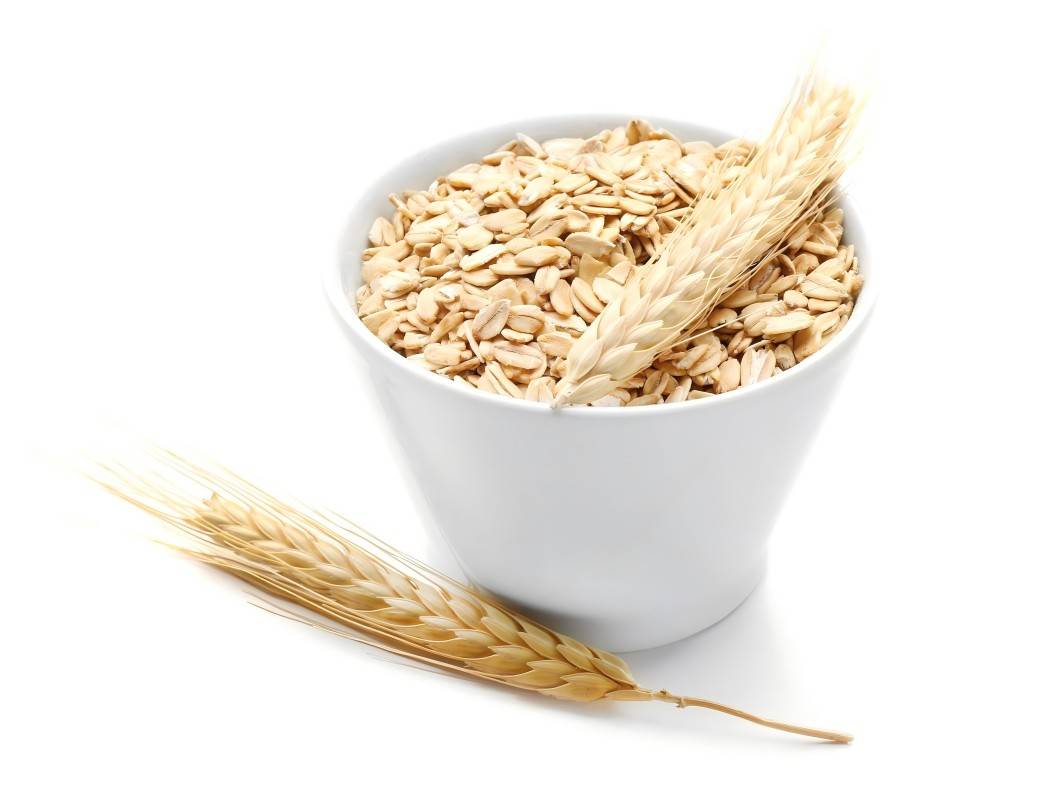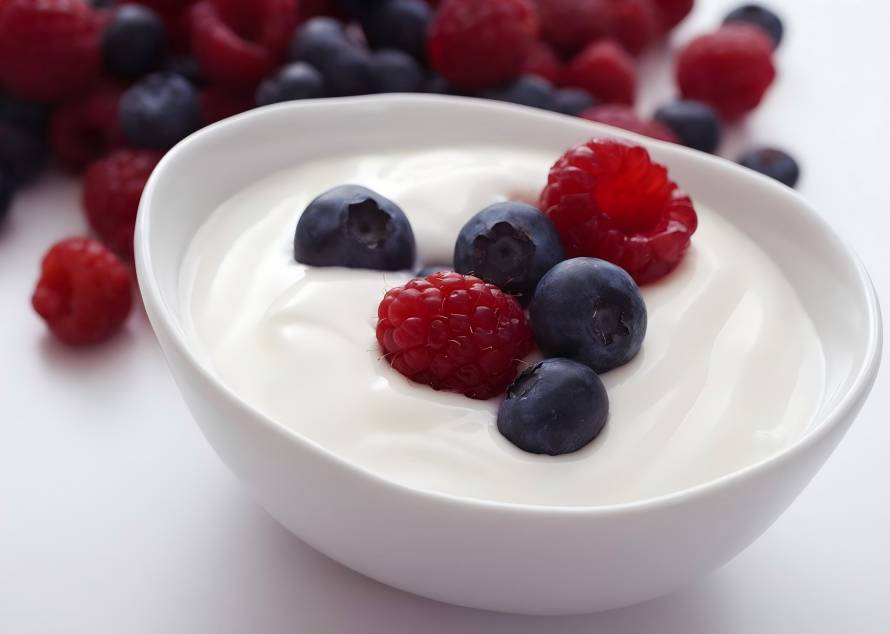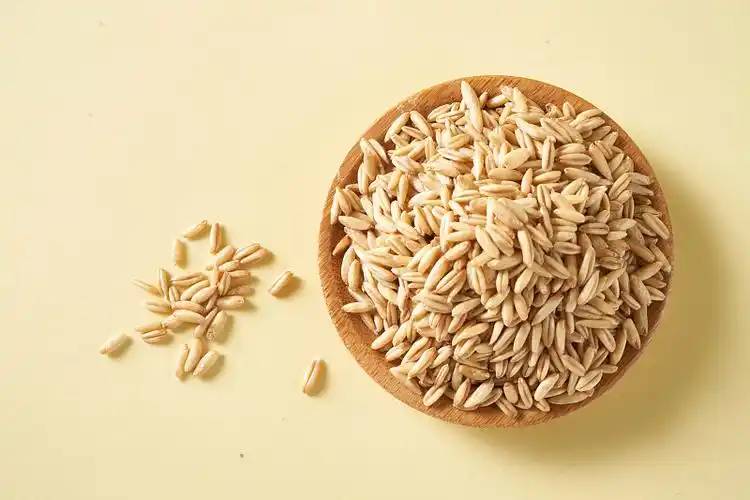What Are the Uses of Oat Beta Glucan in Aquaculture?
Oats are one of the eight traditional staple crops of mankind and are widely cultivated around the world, ranking fourth among staple crops. Oats have unique nutritional value and health-promoting physiological functions. In recent years, many clinical studies at home and abroad have verified that regular consumption of foods containing oats can help patients lower their blood pressure[1] and cholesterol[2], as well as prevent heart disease[3] and control diabetes[4]. Therefore, it is of great practical significance to conduct in-depth research on the nutritional and functional properties of oats and innovate and develop a variety of foods with health-promoting functions.
In addition to being rich in protein, unsaturated fatty acids, vitamins, etc., oats also have a large amount of soluble dietary fiber, of which β-glucan is particularly important [5,6]. β-glucan is considered to be the main member of oat dietary fiber. It is a long-chain polysaccharide composed of β-D-glucose monomers linked by glycosidic bonds. It is mainly found in the cell walls of many natural sources such as bacteria, fungi, algae and grains [7-9]. Typically, β-glucan is used as a preservative, antifungal agent and antioxidant due to its good water solubility, high viscosity and gelling properties [10-12].
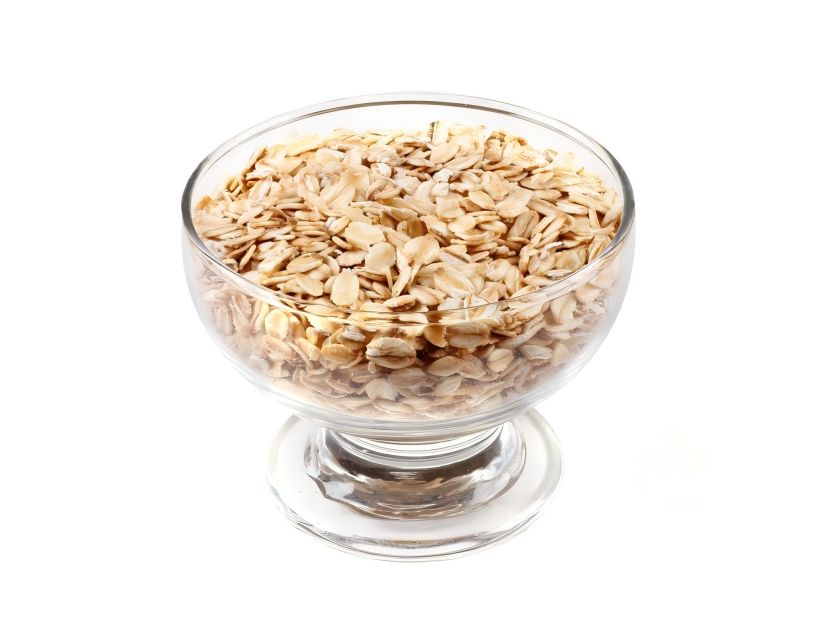
It also plays a physiological role in regulating blood sugar and cholesterol levels and reducing the risk of coronary heart disease and colorectal cancer [13, 14]. By 2024, the global β-glucan market is expected to be worth 1.03 billion U.S. dollars, with oat β-glucan dominating [15]. It is economically feasible to produce β-glucan from waste materials (oat bran) from oat processing, and it is beneficial for efficient use of resources [16]. Therefore, it is necessary to summarize the current research progress on the deep processing and refined utilization of β-glucan in oats . It is therefore necessary to summarize the current research progress on the deep processing and refined utilization of β-glucan from oats, identify the problems, and provide a reference for its further development and utilization.
1 Preparation of β-glucan from oats
In recent years, a large number of documents have reported on the methods for extracting, separating and purifying β-glucan from oats. The main methods are aqueous extraction, alkaline extraction, enzymatic hydrolysis with ethanol, and a two-step method using hot water.
1.1 Aqueous extraction
Previous studies on oat beta-glucan have found that this polysaccharide is insoluble in organic solvents but has good solubility in water. Therefore, the water extraction method has become an effective means of extraction. Wang Haibo et al. [17] extracted β-glucan from oat bran by hot water extraction, and found that under alkaline conditions, the yield was 4% when the liquid-to-material ratio was 1:10 (g/mL) and the temperature was 60 °C for 60 min. Pan Ting et al. [18] found that the extraction temperature was 60 °C, the liquid-to-material ratio was 1:25 ( g/mL), pH = 11, the extraction rate of oat β-glucan was significantly improved, but a continued increase in temperature will cause the starch to gelatinize, which is not conducive to extraction. The hot water extraction method produces more impurities such as xylan, starch and protein, which reduces the purity and quality of β-glucan. Therefore, although the hot water extraction method is simple, it takes a long time, produces a lot of impurities, has a high viscosity and a low extraction rate. Therefore, it needs to be used in combination with other extraction methods, which may have better results.
1.2 Alkali extraction
To solve the problem of high viscosity of the aqueous extract, Wood et al. [19] proposed the use of an alkali solution to prepare oat β-glucan. He used a Na2CO3 solution for extraction. Considering that the gelatinization of starch and the significant increase of impurities occur above 63 °C, the pH of the extraction solution was adjusted to 10 using a Na2CO3 solution through optimization, and the extraction was carried out at 45 °C for 30 min. The product yield was was improved to a certain extent, and the production of impurities such as starch and protein was effectively reduced.
Lin Weijing et al. [20] used an NaOH solution extraction method to extract β-glucan from ground oat wholemeal powder. The results showed that the extraction rate was optimal at 40 °C, and the extraction rate increased with the continuous addition of liquid. The maximum was reached at a liquid-to-material ratio of 1:16 (g/mL). Considering the damage to the product caused by the strong alkalinity, the pH was maintained at 12.5. Combining economic benefits with the long extraction time the effect on the extraction rate is not obvious, and the time is set to 3 h. Under these set conditions, the efficient extraction of β-glucan from oat whole flour was successfully achieved, and the extraction rate reached 91.83%. However, the strong alkalinity may cause changes in the color of oat β-glucan, and it is prone to contamination by strong alkaline waste liquid, so it is not suitable for the current environmentally friendly production requirements.
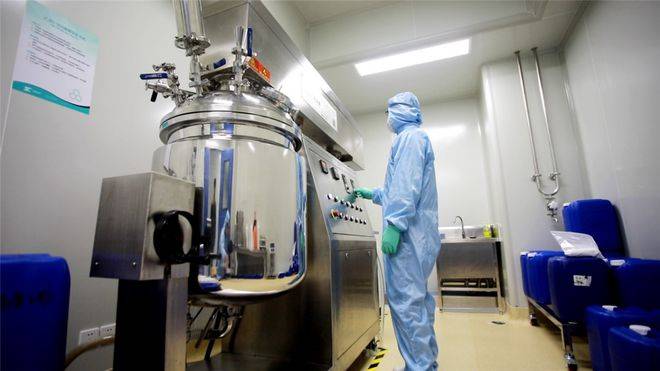
1.3 Microwave method
Domestic and foreign studies [21] have pointed out that microwave extraction of polysaccharides can improve the extraction efficiency and yield of polysaccharides, which is mainly due to the fact that microwaves can break the cell walls of the aleurone layer of oats, making it easier to extract polysaccharides. Wang Shangyu et al. [22] found that using the microwave method, the extraction rate increases with the increase of microwave power, liquid-to-material ratio, temperature and time, but the improvement effect is not obvious in the later stage. Through process optimization, it is determined that the power is 640 W, the liquid-to-material ratio is 1:15 (g/mL), the temperature is 80 °C, the microwave time is 4 min, and the yield of β-glucan is 5.1%, which is faster and the yield was higher. Shen Ruiling et al. [23] used intermittent microwave processing, with a microwave power of 720 W, a NaOH solution pH of 10, a liquid-to-solid ratio of 1:12 (g/mL), and a total extraction time of 9 min, which increased the yield of oat β-glucan to 8.31%, a significant improvement over the previous method. Liang Qianqian et al. [24] added an ultrasonic process to microwave processing. The extraction time was 18 min, and the yield was increased to 8.45% under the conditions of a microwave power of 639 W, a pH of 10, and a material-to-liquid ratio of 1:36 (g/mL). This is a significant improvement over the extraction of oat β-glucan by microwave alone. Compared to the traditional water extraction method, the microwave-assisted extraction method not only improves the yield of β-glucan, but also greatly reduces the time consumption. However, because it is uncontrollable during the microwave process, it may affect the solution and destroy the oat β-glucan in it, thereby reducing the yield of β-glucan.
1.4 Enzyme extraction
Enzyme extraction is a method that uses enzymes to decompose and remove impurities in the extraction solution to extract β-glucan from the raw material. At the same time, the destruction of the cell structure of oat bran by the enzyme leads to a higher extraction rate of β-glucan during the post-fermentation extraction process. Neha et al. [25] used an enzymatic method and other methods to isolate β-glucan. An enzymatic method using heat-resistant α-amylase and protease achieved an extraction rate of 86.7%. Compared with the alkali method and hot water method, the enzymatic method has a higher yield of oat β-glucan and better colloidal stability. Aktas et al. [26] found that enzymatic extraction increased the content of soluble oat β-glucan, but longer enzymatic hydrolysis times and higher enzyme dosages were counterproductive, possibly due to the further hydrolysis of oat β-glucan to glucose during prolonged reactions [27].
Compared to chemical reagent methods, enzyme extraction is a green and gentle method with many advantages: higher extraction yield, better purity, more stable and safer extraction products, and the extract has lower degradation characteristics. Therefore, the use of biological enzymes for the extraction of oat β-glucan has good application prospects. Various hydrolases such as xylanase, glucoamylase, α-amylase and protease have been used to minimize the presence of a large number of impurities in the extracted β-glucan.
1.5 Ultrasonic method
Patist et al. [28] and Bhaskaraeharya et al. [29] believe that the energy generated by ultrasonic cavitation (bubble explosion) damages cell walls, thereby improving the release of cell components such as polysaccharides. Zhai Aihua et al. [30] found that the yield of ultrasonic treatment increased with increasing temperature, and was optimal at 70 °C. The liquid-to-solid ratio was 1:15 (g/mL), and the ultrasonic extraction was carried out twice for 18 minutes each time. The yield of oat β-glucan was 7.32%. Li Mi-zuan et al. [31] combined the hot water method, ultrasonic method and enzymatic method. First, the oats were heated in 75 ℃ hot water for 4 h, then the ultrasonic method was used with a power of 400 W, a temperature of 50 ℃ and an extraction time of 30 min.
Finally, 1.5% amylase was added for enzymatic hydrolysis for 30 min. The β-glucan extraction rate was 5.09%. However, it can be seen from this process that the extraction process is complicated and the time is long, but the yield is not mentioned to have been greatly improved. Chen et al. [32] studied the ultrasonic-assisted extraction and conventional extraction of β-glucan from defatted oat bran at different temperatures. The results showed that at 70 °C, the yield of β-glucan was not much different from that at 20 °C. At 20 °C, the β-glucan extraction rate of ultrasonic-assisted extraction pretreatment was about 37%. From an economic point of view, the advantage of using a lower temperature is obvious. The ultrasonic treatment time has two opposite effects on the extraction rate. When the ultrasonic treatment time does not exceed 5.5 min, the β-glucan yield increases significantly; when the ultrasonic treatment time exceeds 5.5 min, the β-glucan yield decreases instead, which has a negative impact on the β-glucan extraction rate [33].
Among the many methods used to extract β-glucan, ultrasonic-assisted extraction has the advantages of being more efficient, faster and simpler, as it shortens the time. However, long-term ultrasonic treatment is more likely to damage β-glucan chains. At the same time, ultrasonic-assisted extraction requires relatively small amounts of raw materials, and the extraction of large amounts of materials may result in low extraction rates and high energy consumption.
1.6 Fermentation
Fermentation is an ancient food processing method. Wu et al. [34] used filamentous fungi to ferment oat bran in order to improve the extraction rate. Niger Aspergillus and Rhizopus were used to ferment oat bran, respectively. The inoculum, fermentation time and temperature were used as variables. Under the optimal conditions, the extraction rates of β-glucan were 45.57% and 51.10%, respectively, which were about three times that before fermentation. Wu Di et al. [35] selected three fungi, including yellow umbrella, to ferment oats and extract oat β-glucan.
Compared with unfermented oat β-glucan, the content of fermented oat β-glucan and total sugar were both increased. Among them, the β-glucan yield of yellow umbrella was the highest, about 289 mg/L. The optimal fermentation temperature was 28 ℃, the liquid-to-material ratio 1:20 (g/mL), pH equal to 5, fermentation for 48 h, and the degree of influence on the yield increases in turn. Studies have shown that as the temperature increases, the enzymatic hydrolysis rate of the enzymes produced by fermentation is faster, which in turn makes β-glucan more extractable. However, too high a temperature can lead to enzyme inactivation and bacterial death, thereby reducing the degree of hydrolysis of oat bran and the extractability of β-glucan [36]. In the early stages of fermentation, the cell structure of oat bran is destroyed and the extractability of β-glucan is increased [37]. As the fermentation time increases, the enzymes produced by fermentation may over-hydrolyze β-glucan, which in turn leads to a decrease in β-glucan production.
Compared with the traditional water extraction method, the fermentation method has greatly improved the yield of oat β-glucan and is more cost-effective. However, it is more difficult to select a suitable strain, requires a lot of effort, and has a long fermentation time, making the overall cycle longer.
1.7 Other
In addition to the common extraction methods mentioned above, attention is also being paid to combined process extraction technology. Kurek et al. [38] used natural flocculants (chitosan, guar gum and gelatin) to extract and purify β-glucan from oats. The use of flocculants relatively reduced the total amount of extract, but effectively removed impurities such as protein and ash, thereby improving the purity of the extract. When the concentration of chitosan was 0.6%, the has the highest β-glucan content, 79.0%. Wu Jia et al. [39] used a hot water extraction-freeze-thaw cycle process to extract oat β-glucan. The endogenous enzyme activity was not destroyed. After extraction with hot water (55 °C) for 2 h and concentration, the β-glucan yield was increased by 1.5% by freezing (-18 °C, 24 h) and thawing (4 °C, 12 h) three times. Wang Chong et al. [40] used an ultrasonic method with a power of 300 W for 15 min, followed by treatment at 300 MPa for 4 min. The whole process used a synergistic method of ultra-high pressure and ultrasonic waves. During the extraction process, the pH was maintained at 10 and the liquid-to-solid ratio was 1:18 (g/mL). The yield of β-glucan was 43.10% higher than that obtained using the ultrasonic method, and 159.38% higher than that obtained using the water extraction method 159.38%.
Yoo et al. [41] broke with the tradition of using extraction temperatures below 100 °C and used a high-temperature, high-pressure subcritical water extraction process. The yield of oat β-glucan was as high as 6.98% under the conditions of an extraction temperature of 200 °C, a duration of 10 min, a pH value of 4.0, and a particle size of 425–850 μm. This is a improvement. However, prolonged high-temperature and high-pressure extraction will exacerbate the hydrolysis of β-glucan, resulting in a decrease in yield and an increase in impurities such as 5-hydroxymethyl-2-furaldehyde and fructose. Subcritical water extraction is more demanding in terms of preparation equipment, and the oat β-glucan obtained is not cheap. Its commercial application still needs to be further evaluated. The comprehensive research results show that the synergistic extraction process has a positive impact on the yield and purity compared to the individual extraction process, and it has achieved significant advantages in terms of time and efficiency. It is worth further exploring.
According to the current research results, the extraction process of oat β-glucan needs to comprehensively consider different extraction methods due to its special physicochemical properties, in order to optimize the extraction effect. Table 1 compares different extraction methods of oat β-glucan. These methods improve some of the shortcomings of the traditional extraction process through physical or chemical means, and can better retain the biological activity of oat β-glucan. In addition to the extraction process, the origin of the oats, the quality of the variety and the pre-treatment process also affect the final extraction rate and purity to a certain extent. Future research may explore more innovative extraction techniques to meet the growing demand for efficient extraction and application of oat β-glucan.
2 Functional properties of oat β-glucan
2.1 Physical properties
Beta-glucan has excellent physical properties: it is highly water-soluble [42], viscoelastic [43], water-retaining [44] and gelling [45]. In particular, it can effectively promote the folding and cross-linking of proteins to form a more uniform, denser and more stable gel network structure [46]. Therefore, it can be used to improve the gel strength or water retention of products. For example, He et al. [47] found that the addition of oat beta-glucan polysaccharide can significantly improve the texture properties, gel strength and water retention of the gel sample. Oat β-glucan solution exhibits a decreasing trend in viscosity with an increase in shear rate, and has rheologically stable behavior. When the concentration is 2%, the solution has a relatively high viscosity, and when the content is higher than this concentration, it exhibits pseudoplasticity [48]; however, some studies have found that a decrease in the molecular weight of oat β-glucan leads to a decrease in viscosity, which in turn negatively affects its physiological activity [49]. Johansson et al. [50] compared oat β-glucan and barley β-glucan at the same concentration, and showed that oat β-glucan has a higher viscosity, which may be related to its structure. This shows that the structural characteristics of oat β-glucan can affect its physicochemical and biological properties such as solubility and viscosity. Compared with β-glucans from other cereals, oat β-glucan has greater viscosity. The physiological activity mechanism of oat β-glucan and its application prospects need to be further studied.
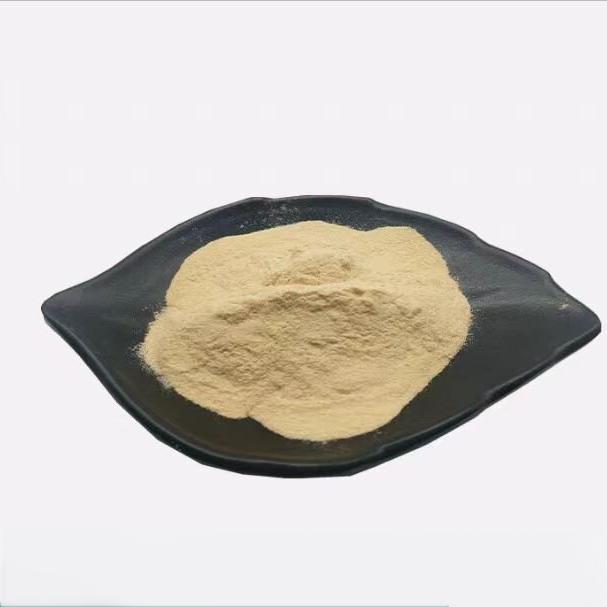
2.2 Antioxidant
Under normal physiological conditions, free radicals exist in a constant dynamic balance between production and clearance, and are by-products of the body's metabolism. This balance is mainly maintained by the antioxidant system. When the level of a free radical exceeds the normal limit, it will destroy the balance in the body. Excessive inflammation will deplete antioxidants and lead to oxidative damage [51]. Cui et al. [52] found that oat β-glucan has a certain degree of antioxidant capacity. Oat β-glucan of different molecular weights all exhibit antioxidant capacity. The mechanism of action is to enhance the activity of antioxidant enzymes such as glutathione peroxidase and superoxide activity, and at the same time enhances the body's ability to remove free radicals and superoxide anions, thereby effectively enhancing the body's antioxidant capacity [53].
Du et al. [54] proposed that oat β-glucan powder has the ability to scavenge free radicals and reduce inflammation, and has a significant protective effect on severe oxidant-induced lipid peroxidation in blood or plasma. Jacek et al. [55] found that in LPS-induced rat colitis, rats supplemented with oat β-glucan showed antioxidant activity in liver and gastric tissues, especially the low molecular weight form of β-glucan . Kopiasz et al. [56] came to similar conclusions in a rat experiment induced by trinitrobenzenesulfonic acid (TNBS), finding that oat beta-glucan had an indirect antioxidant effect on rats with colitis. This makes it particularly suitable for therapeutic or protective purposes.
2.3 Intestinal protection
The microbial community in the host provides important protection against a variety of external adverse factors. Clinical trials have confirmed that the bacterial flora in the stomach and intestines has a significant effect on a variety of pathological conditions [57]. Oat beta-glucan, as a dietary fibre with prebiotic potential, has a potential health-promoting effect on intestinal function [58]. Oat β-glucan can form a gel-like network in the body, changing the viscosity of gastric and intestinal fluids. Its positive effects on the stomach and intestines may also be related to its ability to change the intestinal microflora and the growth of beneficial microorganisms [59].
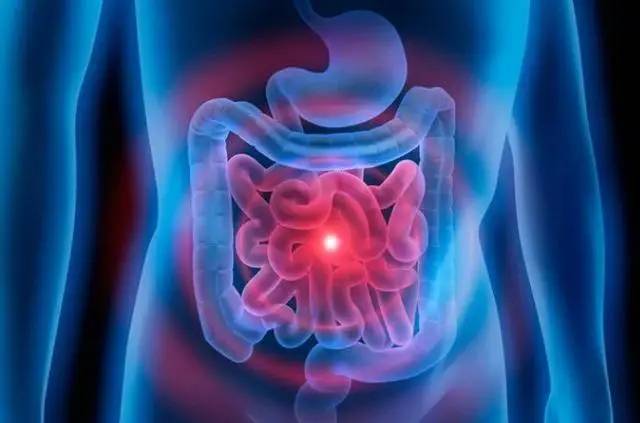
Ma et al. [60] found that oat β-glucan regulates the composition and structure of the intestinal microflora, increasing the abundance of beneficial bacteria such as Lactobacillus, Prevotella, Peptostreptococcus, and Bacillus, thereby protecting intestinal function. and thus protect intestinal function. Wang et al. [61] also confirmed the effect of oat β-glucan in increasing the diversity of the intestinal flora and regulating its composition. Wu et al. [62] showed that oat β-glucan can increase the expression of intestinal barrier-related genes by increasing the production of short-chain fatty acids. These results, as shown in Table 2, indicate that oat β-glucan has a regulatory effect on the intestinal flora and related metabolites, inhibits inflammation, and helps prevent and improve intestinal diseases. Further research is needed to understand the interactions of the microbiota under the influence of oat β-glucan.
3 Application of oat β-glucan in aquatic products
3.1 Application in aquaculture
Beta-glucan is one of the most widely used natural immune stimulants in aquaculture [63]. As a dietary fiber with prebiotic potential, beta-glucan has a potential health-promoting effect on intestinal function [64]. As a prebiotic with improved innate immune properties, it promotes better growth and stress tolerance at the cytokine level, and improves survival [65,66]. Therefore, β-glucan is a valuable functional ingredient that is widely used in aquafeed [67]. Oat β-glucan also has immunomodulatory effects, which have been demonstrated in several animal models [68,69]. Udayangani et al. [68] dissolved oat β-glucan in pure water containing an emulsifier and sonicated it for 5 min to prepare nanoscale oat β-glucan, which was used to feed zebrafish larvae. The results showed that it could effectively increase the survival rate of zebrafish larvae and enhance the disease resistance of zebrafish larvae.
It was also shown that nano-scale oat β-glucan can be suspended in water for a long time and is not prone to agglomeration, which is beneficial for adding it to feed. Real-time quantitative fluorescent PCR results showed that the immunomodulatory function of nano-scale oat β-glucan increased with increasing concentration, and immune function genes including TNF-β, IL-1β, β-defensin, lysozyme, IL 10, IL 12 and C-Rel had the highest expression at a concentration of 500 mg /mL. In summary, oat β-glucan exhibits non-toxicity and excellent protective effects in the gut of fish, has strong disease resistance, and is a potential immune stimulant for fry. However, there have been few studies on the immunomodulatory properties of oat β-glucan in aquatic animals, and the relevant knowledge is incomplete. Further research is needed.
Priscila et al. [70] used spray drying technology to microencapsulate oat β-glucan in order to improve the survival rate of Bacillus subtilis during storage and exposure to adverse conditions. Microencapsulated cell characterization experiments were carried out, and the cells were stored at different temperatures by exposing them to simulated gastric juice for 90 days. The characterization included analysis of efficiency, morphology, moisture, water activity, hygroscopicity, particle size, and zeta potential. The microcapsule particle size was 1.5 μm, with an encapsulation rate of 77.9%. The viability of the treated microencapsulated cells was 8.4 log CFU/mL, while the viability of the free cells was 7.6 log CFU/mL. After 90 days of storage, only the microencapsulated cells maintained viability above 6 log CFU/mL. Spray drying technology combined with the addition of oat beta-glucan can effectively protect Bacillus subtilis.

In aqueous solution, β-glucan forms a viscous matrix due to its good viscosity, which helps to coat materials or biological cells and thus form a membrane. Oat β-glucan has excellent prebiotic properties that can promote the growth of probiotics, and the microencapsulation process can effectively protect the probiotics. The use of β-glucan as a wall material for microcapsules, with its excellent physical and chemical properties and rich nutritional properties, provides good protection for its use in fish feed and has important application potential.
At present, yeast β-glucan is widely studied in aquatic animals such as fish, shrimp, and shellfish, while oat β-glucan has few applications. The reason for this may be that the extraction and structural characteristics of oat β-glucan have not yet been thoroughly studied, and the cost is relatively high. However, oat β-glucan has a small molecular weight, high branch density, strong biological activity, and better penetration and absorption capacity. Compared with yeast β-glucan, oat β-glucan has better water solubility. The application of oat β-glucan in aquatic animals still needs to be analyzed and discussed. At the same time, further exploration of the commonalities and differences in structure, connection methods, and functions of β-glucans from different species sources will not only enhance people's understanding of β-glucans knowledge of β-glucans, but also promote the development and utilization of a variety of resources and functional ingredients.
3.2 Application in aquatic food
In the past few years, interest in the application of oat in food has become more widespread. Many literatures have shown that oat β-glucan provides many benefits such as regulating gastrointestinal health and improving immunity. The demand for oat products is growing rapidly worldwide, and there is still considerable potential for the use of oat β-glucan in the food industry. Oat β-glucan has good emulsion stability, water retention, gelling ability and binding water capacity [44, 71], and can replace oil to a certain extent in baking without adversely affecting its physical properties and sensory quality, providing the possibility of further application of oat β-glucan in aquatic foods.
Oat β-glucan can promote protein unfolding and cross-linking, forming a more uniform and denser gel network structure, which in turn allows more water to be trapped in the network structure and fixed [46,72,73]. He et al. [74] incorporated oat β-glucan into white crucian fish surimi and found that at an oat β-glucan addition of 1.0%, the gel properties of white the gel properties of the fish surimi were significantly improved, and the gel network structure of the fish surimi was also the most compact and ordered. The cooking loss of the fish surimi gel network structure was minimized when 1.0% oat β-glucan was added, and the proportion of immobile water was also maximized. This is also related to the fact that oat β-glucan itself has a certain degree of hydrophilicity.
This finding is similar to the results obtained in previous experiments on pork and chicken products. However, the amount of oat beta-glucan added is not the more the better. As the content of oat beta-glucan continues to increase, the gel properties of surimi decrease rapidly. The mechanism behind this needs to be further studied. Compared with the control group, due to the different extraction process, some oat β-glucan is yellow in color, which will affect the color of the additive. Therefore, this factor should be considered when extracting oat β-glucan. In addition, it is also suitable for application in current aquatic pre-prepared food products to improve the quality of aquatic products. Studies by Mohsen et al. [75] and Sarteshnizi et al. [44] have shown that adding a small amount of oat β-glucan to aquatic products can reduce the loss of water in the meat and maintain a better tender texture.
He et al. [47] studied the effect of ultrasonic treatment combined with oat beta-glucan on the gel strength of surimi. The results showed that at an ultrasonic frequency of 25 kHz and an intensity of 75.60 W/cm2, the effect of oat beta-glucan on improving the texture, gel strength and water retention of surimi was better than that without ultrasonic treatment, and the color of the surimi was whiter, indicating that ultrasonic treatment combined with oat beta-glucan can effectively improve the quality of surimi.
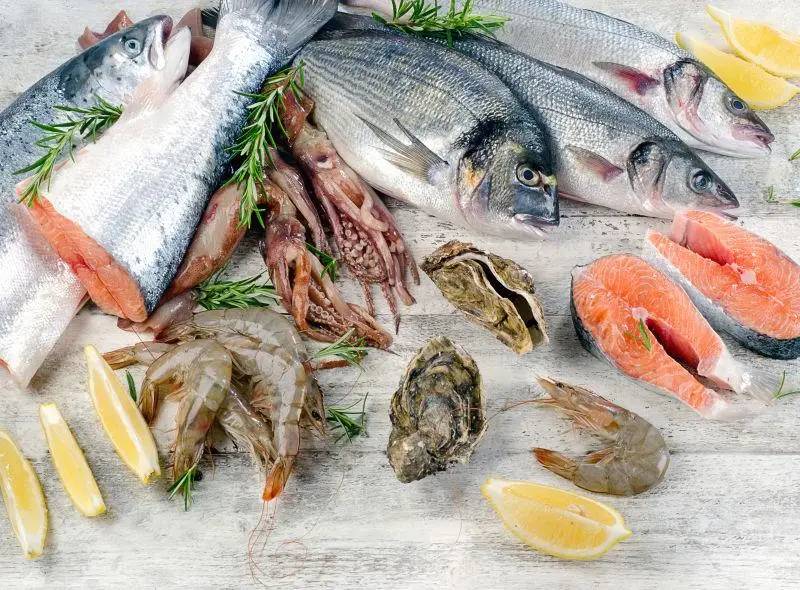
Oat β-glucan has been shown to have antioxidant properties [76], which can reduce oxidative damage to aquatic products and extend the shelf life. Its wide application in pork and chicken products also further confirms its importance in the meat products industry. Table 3 provides an overview of the current application of oat β-glucan in aquatic products. At present, there is relatively little research on the use of oat β-glucan in aquatic foods. Combining the functional properties of oat β-glucan with the current results of some of its applications in aquatic foods, it is evident that it has a very good effect on improving the quality of aquatic products. Therefore, in the future, it is necessary to conduct in-depth research on the application effects and mechanisms of oat β-glucan in various aquatic foods to better improve the quality of aquatic foods and also promote the development and utilization of oat β-glucan.
4 Summary and outlook
Oat β-glucan is a soluble dietary fiber with obvious health benefits. It also has excellent nutritional, economic and medical values, and can be widely used in functional foods and the biomedical field. It has been isolated and purified from oats and their by-products (such as bran), and is used in the production and processing of various foods. Therefore, oat β-glucan has become one of the most sought-after raw materials or food ingredients in the health food industry.
(1) Although many studies have focused on improving the extraction rate and purity of oat β-glucan, large-scale preparation is still not possible due to process issues. The lack of an extraction and purification process suitable for industrial production that is both cost-effective and of high quality remains the main factor restricting the further industrial development of oat β-glucan. At the same time, it is also crucial to find new extraction and purification techniques and explore the wide application of oat β-glucan in aquatic products, including overcoming current process difficulties, improving production efficiency, and ensuring product quality.
(2) In addition, there have been many studies on oat beta-glucan, but few of them have been conducted in aquaculture. Further research is needed to understand the benefits of oat beta-glucan in aquaculture, to explore its antioxidant, anti-inflammatory and antibacterial effects in aquaculture, and to study and explain its specific mechanism of action on the growth performance of aquatic animals and its effects on multiple tissues and organs in the body. It is also necessary to further investigate the aquatic ecological environment to ensure that the application of oat β-glucan is beneficial to small animals without causing negative effects on the aquatic ecosystem.
(3) The use of products containing oat β-glucan has great prospects. In the past few years, β-glucan has become increasingly popular due to its proven health benefits, and is widely used in, for example, dairy products, baked goods and meat. In the future, the application of oat β-glucan in prepared meals should be explored in combination with its characteristics, to improve the taste and texture of prepared meals and enhance the nutritional value of the dishes. Innovative development of prepared meal products with functionality and deliciousness will provide consumers with healthier food options and meet the market demand for healthy foods.
Reference:
[1] PEMA R, KAREN S, LIPING Y, et al. Oat Beta-Glucan Alone and in Combination with Hydrochlorothiazide Lowers High Blood Pressure in Male but Not Female Spontaneously Hypertensive Rats [J]. Nutrients, 2023, 15(14): 3180.
[2] SCHLÖRMANN W, BOCKWOLDT J A, MAYR M F, et al. Fermentation profile, cholesterol-reducing properties and chemopreventive potential ofβ-glucans from Levilactobacillus brevis and Pediococcus claussenii-a comparative study with β-glucans from different sources [J]. Food Function, 2021, 12(21): 10615-10631.
[3] MAŁGORZATA D, MONIKA P, JUSTYNA B, et al. Multi-Bioactivity of Protein Digests and Peptides from Oat (Avena sativa L.) Kernels in the Prevention of the Cardiometabolic Syndrome [J]. Molecules, 2022, 27(22): 7907.
[4] YANG Q, CAI X X, ZHU Y D, et al. Oat β-glucan supplementation pre- and during pregnancy alleviates fetal intestinal immunity development damaged by gestational diabetes in rats [J]. Food function, 2023, 14(18): 8453-8466.
[5] RUNNAN L, ALMA D T, LEI S, et al. Structural modification of oat protein by thermosonication combined with high pressure for O/W emulsion and modelsaladdressing production [J]. International journal of biological macromolecules, 2023, 255: 128109-128109.
[6] BERTHOLDT K M A, BAIER K A, RAUH C. Potential of Modification of Techno-Functional Properties and Structural Characteristics of Citrus, Apple, Oat, and Pea Dietary Fiber by High-Intensity Ultrasound [J]. Foods, 2023, 12(19): 3663.
[7] GUNJAN M, SUMATHI S, BABY J. Extraction and Isolation of β-Glucan from Grain Sources-A Review [J]. Journal of food science,
2017, 82(7): 1535-1545.
[8] NORIYOSHI M, YOSHIKI Y. 3D Structural Insights into β-Glucans and Their Binding Proteins [J]. International Journal of Molecular Sciences, 2021, 22(4): 1578.
[9] LUO Y, LI Y C, MENG F B, et al. Simultaneously enhanced stability and biological activities of chlorogenic acid by covalent grafting with soluble oat β-glucan [J]. Food Chemistry: X, 2023, 17: 100546.
[10] CYRAN MAŁGORZATA R, SNOCHOWSKA KRZYSZTOFA K, POTRZEBOWSKI MAREK J, et al. Xylan-cellulose core structure of oat water-extractable β-glucan macromolecule: Insight into interactions and organization of the cell wall complex [J]. Carbohydrate Polymers, 2024, 324: 121522.
[11] HONGWEI C, XIAOXUE W, MENGMENG S, et al. Influence of physicochemical changes and aggregation behavior induced by ultrasound irradiation on the antioxidant effect of highland barley β-glucan [J]. Food Chemistry: X, 2023, 19: 100793.
[12] MAX, DONG L, HE Y, et al. Effects of ultrasound-assisted Hsub2/subOsub2/sub on the solubilization and antioxidant activity of yeast β-glucan [J]. Ultrasonics sonochemistry, 2022, 90: 106210.
[13] BERGENDIOVA K, TIBENSKA E, MAJTAN J. Pleuran (beta-glucan from Pleurotus ostreatus) supplementation, cellular immune response and respiratory tract infections in athletes [J]. European Journal of Applied Physiology, 2011, 111(9): 2033-2040.
[14] MALL G J, LÖFVENDAHL L, BRUMMER R, et al. Differential effects of dietary fibres on colonic barrier function in elderly individuals with gastrointestinal symptoms [J]. Clinical Nutrition, 2018, 37(Supl.1): S8.
[15] BAI J Y, REN Y K, LI Y, et al. Physiological functionalities and mechanisms of betaglucans [J]. Trends Food Sci. Technol, 2019, 88,57-66.
[16] SIBAKOV J, ABECASSIS J, BARRON C, et al. Electrostatic separation combined with ultra-fine grinding to produce β-glucan enriched ingredients from oat bran [J]. Innovative Food Science & Emerging Technologies, 2014, 26, 445-455.
[17] Wang Haibo, Liu Dachuan, Xie Bijun. Research on the extraction and separation and purification process of β-glucan from oats [J]. Food Science, 2004, 5: 143-147.
[18] Pan Yan, Wu Hao. Orthogonal optimization of β-glucan extraction from oats and its molecular characterization [J]. Journal of Beijing University of Commerce and Industry (Natural Science Edition), 2009, 27(5): 5-9.
[19]WOOD PJ, SIDDIQUI IR, PATOND. Extraction of high-viscosity gums from oats [J]. Cereal Chemistry, 1978, 55(6): 1038-1049.
[20] Lin Weijing, Wu Guangfeng, Wang Qiang, et al. Optimization of β-glucan extraction process from oat whole meal [J]. Food and Machinery, 2010, 26(1): 121-124+167.
[21] KRATCHANOVA M, PAVLOVA E, PANCHEVI. The effect of microwave heating of fresh orange peels on the fruit tissue and quality of extracted pectin [J]. Carbohydrate Polymers, 2004, 56: 181-185.
[22] Wang Shangyu, Shu Jing, Xia Wenshui. Research on microwave-assisted extraction technology of oat bran β-glucan [J]. Food Industry Science and Technology, 2005, 12: 143-144+171.
[23] Shen Ruiling, Dong Jilin, Wang Zhangcun. Research on microwave extraction process of β-glucan from naked oat bran [J]. Chinese Agricultural Science Bulletin, 2006, 10: 316-320.
[24] Liang Qianqian, Li Fen, Li Liangyu, et al. Optimization of parameters and structural analysis of polysaccharides extracted from oat bran by ultrasonic-microwave synergistic method [J]. China Food Additives, 2016, 9: 178-187.
[25] NEHA M,NEETU M,PRAGYA M. Influence of different extraction methods on physiochemical and biological properties of β-glucan from Indian barley varieties [J]. Carpathian Journal of Food Science and Technology, 2020, 12(1): 27-39.
[26] AKTAS-AKYILDIZ E, SIBAKOV J, NAPPAM, et al. Extraction of soluble β-glucan from oat and barley fractions: Process efficiency and dispersion stability [J]. Journal of Cereal Science, 2018, 81: 60-68.
[27] SIBAKOV J, MYLLYM€AKI O, SUORTTI T, et al. Comparison of acid and enzymatic hydrolyses of oat bran β-glucan at low water content [J]. Food Research International, 2013, 52(1): 99-108.
[28] PATIST A, BATES D. Ultrasonic innovations in the food industry: From the laboratory to commercial production [J]. Innovative Food Science and Emerging Technologies, 2007, 9(2): 147-154.
[29] BHASKARAEHARYA K R, ASHOKKUMAR M, KENTISH S. Selected Applications of Ultrasonics in Food Processing [J]. Food Engineering Reviews, 2009, 1(1): 31-49.
[30] Zhai Aihua, Zhang Lishu, Wang Dong. 777 Process research on ultrasonic-assisted extraction of β-glucan from oat bran [J]. Journal of Heilongjiang Bayi Agricultural University, 2008, 5: 61-64.
[31] Li Mizhuan, Lu Wenxiu, Li Mingli, et al. Process optimization of ultrasonic combined with enzymatic extraction of β-glucan from oat bran [J]. Guizhou Agricultural Science, 2020, 48(11): 91-95.
[32] CHEN C, WANG L, WANG R, et al. Ultrasound-assisted extraction from defatted oat ( Avena sativa L.) bran to simultaneously enhance phenolic compounds and β-glucan contents: Compositional and kinetic studies [J]. Journal of Food Engineering, 2018, 222: 1-10.
[33] SOURKI H A, KOOCHEKI A, ELAHI M. Ultrasound-assisted extraction of β- d -glucan from hull-less barley: Assessment of physicochemical and functional properties [J]. International Journal of Biological Macromolecules, 2017, 95: 462-475.
[34] WU J, JIN S, WU S, et al. Effect of filamentous fungi fermentation on the extractability and physicochemical properties ofβ -glucan in oat bran [J]. Food Chemistry, 2018, 254: 122-128.
[35] Wu Di, Bing Xue, Wang Changtao, et al. Study on the extraction of oat β-glucan by two-way fermentation and its physicochemical properties [J]. Food Research and Development, 2019, 40(1): 184-193.
[36] BANSALN, TEWARI R, SONI R, et al. Production of cellulases from Aspergillus niger NS-2 in solid state fermentation on agricultural and kitchen waste residues [J]. Waste Management, 2012, 32(7): 1341-1346.
[37] BEI Q, CHEN G, LU F, et al. Enzymatic action mechanism of phenolic mobilization in oats ( Avena sativa L.) during solid-state fermentation with Monascus anka [J]. Food Chemistry, 2018, 245: 297-304.
[38] KUREK AM, KARP S, STELMASIAK A, et al. Effect of natural flocculants on purity and properties of β-glucan extracted from barley and oat [J]. Carbohydrate Polymers, 2018, 188: 60-67.
[39] Wu Jia, Lin Xiangyang, Huang Dihui, et al. Extraction of oat β-glucan by freeze-thaw method and its structural characterization [J]. Chinese Journal of Food Science, 2011, 11(4): 48-54.
[40] Wang Chong, Zou Jiawen, Chen Hongjun, et al. Study on the extraction of quinoa β-glucan by the synergistic method of ultra-high pressure and ultrasound [J]. Chinese Journal of Cereals, Oils and Foodstuffs, 2020, 35(6): 39-44.
[41] YOO H, KOM, CHUNG M. Hydrolysis of beta-glucan in oat flour during subcritical-water extraction [J]. Food Chemistry, 2020, 308(C):125670.
[42] NGUYEN S H, HEINONEN J, LAATIKAINEN M, et al. Evolution of the molar mass distribution of oat β-glucan during acid catalyzed hydrolysis in aqueous solution [J]. Chemical Engineering Journal, 2020, 382: 122863.
[43] NANCY A, NKHATA L M, REBECCA M, et al. Effect of processing on oat β-glucan viscosity, postprandial glycemic response and subjective measures of appetite [J]. Food function, 2021, 12(8): 3672-3679.
[44] SARTESHNIZI A R, HOSSEINI H, BONDARIANZADEH D, et al. Optimization of prebiotic sausage formulation: Effect of using β-glucan and resistant starch by D-optimal mixture design approach [J]. LWT - Food Science and Technology, 2015, 62(1): 704-710.
[45] VASILEIA S, KALI K, G. CB, et al. Emulsion gel enriched with a barley β-glucan concentrate for reducing saturated fat in biscuits [J]. Food Hydrocolloids, 2023, 145: 109163.
[46] WANG ZW, SUNY Y, DANG YL, et al. Water-insoluble dietary fibers from oats enhance gel properties of duck myofibrillar proteins [J]. Food Chemistry, 2020, 344: 128690.
[47] HE X L, ZHAO H L, XU Y X, et al. Synergistic effects of oat β-glucan combined with ultrasound treatment on gel properties of silver carp surimi [J]. Ultrasonics Sonochemistry, 2023, 95: 106406.
[48] DONGOWSKI G, DRZIKOVA B, SENGE B, et al. Rheological behaviour of β-glucan preparations from oat products [J]. Food Chemistry, 2004, 93(2): 279-291.
[49] JUNG H K, J P W. Impact of the molecular weight, viscosity, and solubility of β-glucan on in vitro oat starch digestibility [J]. Journal of agricultural and food chemistry, 2013, 61(13): 3270-3277.
[50] JOHANSSON L, KARESOJAM, EKHOLM P, et al. Comparison of the solution properties of (1→3)(1→4)- β-D-glucans extracted from oats and barley [J]. LWT - Food Science and Technology, 2007, 41(1): 180-184.
[51] JIANLIN C, YANG L, ZIJIONGD, et al. Toxicological damages on copper exposure to IgMsup+/sup B cells of Nile tilapia (Oreochromis niloticus) and mitigation of its adverse effects by β-glucan administration [J]. Toxicology in Vitro, 2022, 81: 105334.
[52] CUI YM, HAN X D, HU X P, et al. Distinctions in structure, rheology, antioxidation, and α-glucosidase inhibitory activity of β-glucans from different species [J]. International journal of biological macromolecules, 2023, 253(P8): 127684.
[53] SUCHECKA D, HARASYM J, WILCZAK J, et al. Hepato- and gastro- protective activity of purified oat 1-3, 1-4-β-d-glucans of different molecular weight [J]. IntJ Biol Macromol, 2016, 91: 1177-1185.
[54] DU B, XU B. Oxygen radical absorbance capacity (ORAC) and ferric reducing antioxidant power (FRAP) of β-glucans from different sources with various molecular weight [J]. Bioactive Carbohydrates and Dietary Fibre, 2014, 3(1): 11-16.
[55] JACEK W, KATARZYNA B, DARIUSZ K, et al. The effect of low or high molecular weight oat beta-glucans on the inflammatory and oxidative stress status in the colon of rats with LPS-induced enteritis [J]. Food function, 2015, 6(2): 590-603.
[56] ŁUKASZ K, KATARZYNA D, MAŁGORZATA G, et al. Time-Dependent Indirect Antioxidative Effects of Oat Beta-Glucans on Peripheral Blood Parameters in the Animal Model of Colon Inflammation [J]. Antioxidants, 2020, 9(5): 375.
[57] JAYACHANDRANM, CHEN J, CHUNG S SM, et al. A critical review on the impacts ofβ -glucansongut microbiota and human health [J]. The Journal of Nutritional Biochemistry, 2018, 61: 101-110.
[58] BAI J Y, LI T T, ZHANG W H, et al. Systematic assessment of oat β-glucan catabolism during in vitro digestion and fermentation [J]. Food Chemistry, 2021, 348: 129116.
[59] PHAM V T, SEIFERT N, RICHARD N, et al. The effects of fermentation products of prebiotic fibres on gut barrier and immune functions in vitro [J]. PeerJ, 2018, 6: e5288.
[60] MAL, LUOZZ, HUANG YX, et al. Modulating gut microbiota and metabolites with dietary fiber oat β- glucan interventions to improve growth performance and intestinal function in weaned rabbits [J]. Frontiers In Microbiology, 2022, 13: 1074036.
[61] WANG R Y, ZHANG Z F, AIHEMAITIJIANG S, et al. Oat β Glucan ameliorates renal function and gut microbiota in diabetic rats [J]. Frontiers in nutrition, 2022, 9: 875060.
[62] WU X Y, CHEN D W, YU B, et al. Effect of different dietary non-starch fiber fractions on growth performance, nutrient digestibility, and intestinal development in weaned pigs [J]. Nutrition, 2018, 51-52: 20-28.
[63] STEINHAGEN, DIETER, ADAMEK, et al. Dietary beta-glucan (MacroGard (R)) enhances survival of first feeding turbot (Scophthalmus maximus) larvae by altering immunity, metabolism and microbiota [J]. Fish & Shellfish Immunology, 2016, 48: 94-104.
[64] MARTIN G, ALEJANDRA Z, LUIS J P, et al. Modulation of Postprandial Plasma Concentrations of Digestive Hormones and Gut
Microbiota by Foods Containing Oat β-Glucans in Healthy Volunteers [J]. Foods, 2023, 12(4): 700-700.
[65] DOS S V, ANA P S, LUCAS D F D, et al. β-Glucan improves wound healing in silver catfish (Rhamdia quelen) [J]. Fish & Shellfish Immunology, 2019, 93: 5.
[66] REVINA O, AVSEJENKO J, REVINS V. Effect of dietary supplementation with β-glucan on growth performance and skin-mucus microbiota of sea trout (Salmotrutta) [J]. Fisheries & Aquatic Life, 2020, (3): 28.
[67] WILSON W, LOWMAN D, ANTONY P S, et al. Immune gene expression profile of Penaeus monodon in response to marine yeast glucan application and white spot syndrome virus challenge [J]. Fish and Shellfish Immunology, 2015, 43(2): 346-356.
[68] UDAYANGANI R, DANANJAYA S, FRONTE B, et al. Feeding of nano scale oats β-glucan enhances the host resistance against Edwardsiella tarda and protective immune modulation in zebrafish larvae [J]. Fish and Shellfish Immunology, 2017, 60: 72-77.
[69] BŁASZCZYK K, GAJEWSKAM, WILCZAK J, et al. Oral administration of oat beta-glucan preparations of different molecular weight results in regulation of genes connected with immune response in peripheral blood of rats with LPS-induced enteritis [J]. EuropeanJournalof Nutrition, 2019, 58(7): 2859-2873.
[70] PRISCILA A A C D, AMANDA A C D, FERREIRA A R R, et al. Microencapsulation of Bacillus subtilis and oat β-glucan and their application as a synbiotic in fish feed [J]. Journal of microencapsulation, 2023, 40(7): 11-15.
[71] DOMAGALAJ, SADYM, GREGAT, et al. The Influence of Storage Time on Rheological Properties and Texture of Yoghurts with the Addition of Oat-Maltodextrin as the Fat Substitute [J]. International Journal of Food Properties, 2007, 8(3): 439-448.
[72] RUI F, DAN Z, XUELI C. Evaluation of oat β-glucan -marine collagen peptide mixed gel and its application as the fat replacer in the sausage products [J]. PloS one, 2020, 15(5): e0233447.
[73] YOLANDA B, CHERYL D, YING W, et al. Textural andRheological Properties of Oat Beta-Glucan Gels with Varying Molecular Weight Composition [J]. Journal of agricultural and food chemistry, 2014, 62(14): 3160-3167.
[74] HE X L, LV YA, LI X P, et al. Effect of oat β-glucan on gel properties and protein conformation of silver carp surimi [J]. Journal of the science of food and agriculture, 2023, 103: 3367-3375.
[75] MOHSEN C, EHSAN S, REZA M, et al. The effect of β-glucan and inulin on the reduction of aflatoxin B1 level and assessment of textural and sensory properties in chicken sausages [J]. Current Research in Food Science, 2021, 4: 765-772.
[76] MARTA M, OLIWIA W, BEATA K, et al. Preparation and Characterization of Fish Skin Collagen Material Modified with β-Glucan as Potential Wound Dressing [J]. Materials, 2021, 14(6): 1322.


 English
English French
French Spanish
Spanish Russian
Russian Korean
Korean Japanese
Japanese